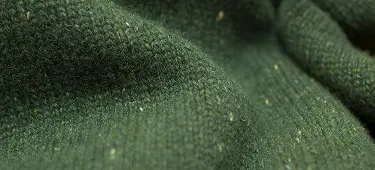

Cotton: The Sustainable Choice
Cotton’s benefits go beyond fashion.
Cotton is grown on a farm, unlike synthetic fibers made in labs derived from crude oil
A drought-resistant crop, most U.S. cotton is grown with rainfall (no irrigation).1
Because it’s a plant, cotton can biodegrade naturally, doesn’t create microplastics and can be recycled through the Blue Jeans Go Green™ program.
Did you know by checking the label for cotton, a natural fiber, you’re making a sustainable choice?
Washing synthetic fabrics releases microplastics that can end up in waterways or aquatic food chains. Because cotton is a natural fiber, it is biodegradable in wastewater, saltwater and freshwater, and doesn’t contribute to microplastic pollution.3
Cotton’s Blue Jeans Go Green™ program recycles and converts old denim jeans into insulation and other products. Since 2006, the Blue Jeans Go Green™ program has collected about 3,500,000 pieces of denim and diverted over 1,950 tons of textile waste from landfills.
Find Out Where To Recycle



Because cotton clothing keeps its shape & washes well, it doesn’t need to be replaced as frequently as those made from other materials.